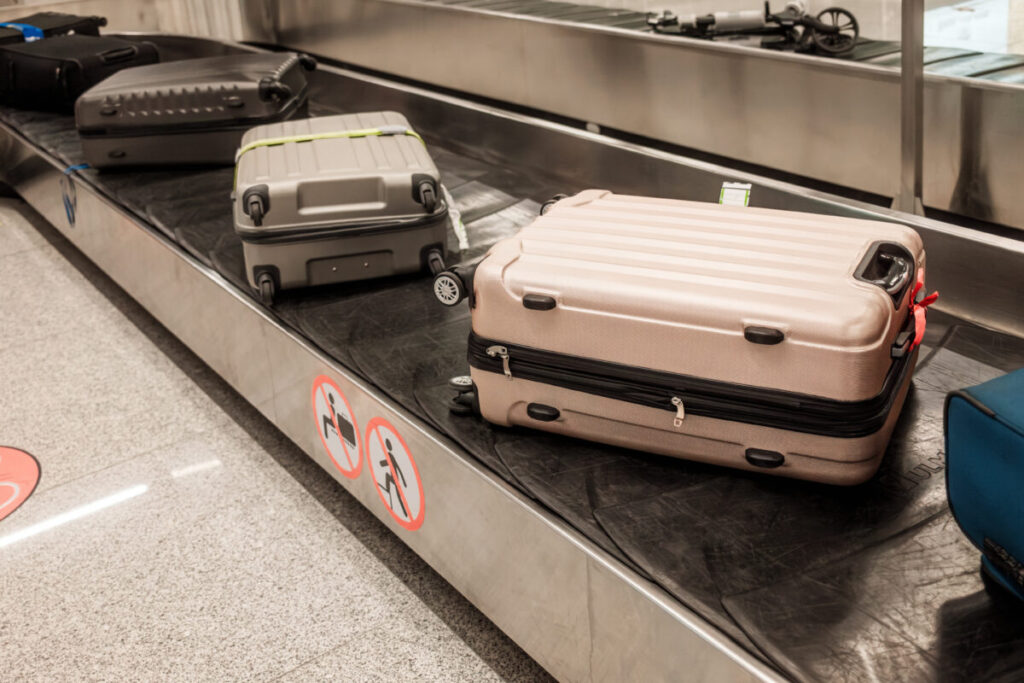Planning a trip can be exciting, but it’s important to consider protection, too. Travel insurance helps cover unexpected problems that might arise before or during your vacation. It can pay for medical bills, lost bags, or trips you must cancel.
Berkshire Hathaway, Allianz, and World Nomads are the best travel insurance companies for 2024. These companies offer good coverage at fair prices and plans that fit different types of trips and travelers.
When buying travel insurance, look at what it covers. Medical coverage is key, especially for trips outside your home country.
Trip cancellation insurance pays you back if you can’t go on your trip. Some plans also cover things like missed flights or lost luggage. It’s smart to compare a few options before you choose.
Types of Travel Insurance

Travel insurance comes in several types to cover different needs. Trip cancellation insurance is a common one. It pays you back if you can’t go on your trip for a covered reason.
Medical coverage is another important type. It helps with doctor bills and hospital costs if you get sick or hurt while traveling. Some policies even cover emergency medical evacuation.
Baggage insurance protects your stuff if lost, stolen, or damaged. This can be helpful if your luggage doesn’t arrive at your destination.
Here are the main types of travel insurance:
- Trip cancellation/interruption
- Emergency Medical
- Baggage and personal items
- Travel delay
- Rental car coverage
Many companies offer package plans that bundle several types together. This can be a good value if you want broad protection.
Some credit cards provide travel insurance, too. It’s worth checking what your card offers before buying a separate policy.
Remember to read the fine print. Each policy has rules about what’s covered and what’s not. It’s smart to compare a few options to find the best fit for your trip.
Coverage Details

Travel insurance policies offer various types of coverage. Most plans include medical coverage for illnesses or injuries while traveling. This usually covers doctor visits, hospital stays, and emergency medical evacuation.
Trip cancellation and interruption coverage are also common. It reimburses you if you must cancel or cut a trip short for covered reasons, such as illness or severe weather.
Many policies also provide baggage coverage. This pays for lost, stolen, or damaged luggage and personal items during your trip.
Here are some typical coverage amounts:
- Medical: £1 million+ for European travel
- Trip cancellation: Up to the full trip cost
- Baggage: £1,000-£3,000
Some plans offer extras like rental car coverage or adventure sports protection. Read the policy details carefully to know what’s included.
It’s smart to get enough medical coverage for your destination. The UK government suggests at least £1 million for Europe trips, but you may want more for farther destinations.
Coverage can vary a lot between policies. Compare a few options to find the right fit for your needs and budget. Look at both the coverage amounts and the specific situations covered.
See Related: Travel Hacks Every Frequent Flyer Should Know
Exclusions and Limitations

Travel insurance isn’t a magic shield that covers everything. It’s important to know what it doesn’t cover.
Many policies have exclusions for pre-existing medical conditions. You might not be covered if you get sick from an old health problem.
Most plans won’t pay for injuries from extreme sports. So, if you plan to go bungee jumping or skydiving, check the fine print first. War and terrorism are often excluded, too.
Natural disasters can be tricky. Some policies cover them, others don’t. It depends on when you bought the insurance and when the disaster happened.
Here are some common exclusions:
- Pregnancy complications
- Self-inflicted injuries
- Alcohol or drug-related incidents
- Lost or stolen cash
There are also limits on how much the insurance will pay. For example, there might be a cap on:
- Medical expenses
- Lost baggage
- Trip cancellation refunds
It’s smart to read the policy carefully before you buy. Ask questions if anything is unclear. This way, you’ll know exactly what you’re getting and what you’re not.
Choosing the Right Policy

Picking the best travel insurance policy can feel overwhelming. There are lots of options. The key is to match the coverage to your specific trip and needs.
Start by looking at the medical coverage limits. A good policy should offer at least $100,000 for emergency medical expenses. More coverage is better if you can afford it.
Trip cancellation and interruption coverage are also important. Make sure the policy covers the full cost of your trip, and read the fine print on what reasons for cancellation are covered.
Consider these other key factors:
- Baggage loss/delay coverage
- Emergency evacuation
- Pre-existing condition waivers
- Adventure sports coverage (if needed)
- “Cancel for any reason” add-on
Group policies can save money for 10+ travelers. For a 2-week trip to Mexico costing $2,200 per person, a group policy may run about $84 per person.
Travel insurance costs typically range from 4% to 10% of the total trip cost. Paying more for better coverage is often worth it for peace of mind.
Don’t just pick the cheapest option. Compare several quotes and coverage details side-by-side. A good policy balances comprehensive protection with affordability.
Tips for Filing Claims

Filing a travel insurance claim can be tricky. Here are some helpful tips to make the process smoother:
Act fast. Contact your insurer within 24-48 hours of an incident. Many policies have strict time limits for reporting claims.
Keep good records. Save all receipts, police reports medical documents, and other proof.
Take photos of damaged items. The more evidence you have, the better.
Read your policy carefully. Before filing, know what’s covered and what’s not. This will save you time and hassle later.
Be honest. Never exaggerate or make false claims. Insurance fraud is illegal and can void your entire policy.
Follow up regularly. Claims can take time. Check-in with your insurer every week or two for updates.
Use the right forms. Ask your insurer for the correct claim forms and complete them fully and accurately.
Get help if needed. Some claims are complex. Don’t be afraid to ask your insurer for guidance or seek expert advice.
Be patient but persistent. The claims process can be slow. Stay calm and keep pushing your claim forward.
See Related: Free Flights: Unlock Secret Tips for Zero-Cost Travel
Common Myths Debunked

Travel insurance can be confusing. Let’s clear up some common misunderstandings.
Myth 1: Expensive policies are always better.
Not true! The cost doesn’t always match the quality. Cheaper plans can offer great coverage for your needs, so comparing different options is smart.
Myth 2: Travel insurance covers everything.
Nope. Each policy has specific coverages and exclusions. Read the fine print carefully. Some things, like extreme sports, may need extra coverage.
Myth 3: You don’t need insurance for short trips.
Wrong! Accidents can happen anytime, anywhere. Even a weekend getaway can benefit from travel protection. It’s better to be safe than sorry.
Myth 4: Your credit card’s travel insurance is enough.
Maybe, maybe not. Credit card coverage is often limited. It might not include medical emergencies or trip cancellations. Double-check what’s actually covered.
Myth 5: You can buy insurance anytime.
Not quite. There are often time limits for purchasing. Some benefits, like pre-existing condition waivers, are only available if you buy early.
Remember, every trip is different. What works for one person might not work for another. Take time to understand your options and choose wisely.
Travel Insurance for Seniors

Seniors often need special travel insurance to cover related risks. In 2024, many companies will offer plans tailored for older travelers.
Top providers include Tin Leg, Trawick International, and Seven Corners. These companies have plans that provide good medical coverage for seniors.
Costs vary, but average around $420 per trip. Prices depend on the traveler’s age, trip length, and coverage amount.
Key things for seniors to look for:
- High medical coverage limits
- Pre-existing condition waivers
- Emergency evacuation coverage
- Trip cancellation/interruption protection
Some plans offer extra perks for older travelers. These may include coverage for prescription drugs or medical devices.
It’s smart to compare a few different policies. Compare coverage and price to find the best fit.
Reading the fine print is crucial. Some plans have age limits or restrictions on certain activities.
Buying insurance early can help lock in better rates and coverage options. Many experts suggest getting a policy soon after booking a trip.
A “Cancel for Any Reason” add-on might be worth considering for seniors with health issues. This add-on allows more flexibility if plans need to change.
Comparing Providers

When comparing travel insurance companies, it is important to weigh your options carefully. Each provider offers different coverage levels and benefits.
Some top-rated insurers for 2024 include:
- Allianz Global Assistance
- Travelex
- World Nomads
- AIG Travel Guard
- Seven Corners
These companies stand out for their comprehensive plans and solid customer service. But the best choice depends on your specific trip and needs.
Key factors to compare:
- Coverage limits for medical expenses
- Trip cancellation/interruption benefits
- Baggage protection
- Adventure sports coverage
- Pre-existing condition waivers
Don’t just look at the price. A cheaper plan may have big gaps in coverage. Read the fine print carefully before buying.
It’s smart to get quotes from 3 to 4 providers. Many offer instant online quotes, making it easy to compare costs.
Remember that travel insurance typically costs 4-10% of your trip price. Paying a bit more can often get you much better protection.
Some credit cards also include basic travel insurance. However, these policies are usually limited. For big trips, a standalone policy is usually safer.
See Related: How to Plan a Gap Year: Cheap Travel Routes and Tips
Future Trends in Travel Insurance

Travel insurance is changing fast. New tech and customer needs are shaping its future. Here’s what to watch for in 2024 and beyond:
- AI and big data will make policies smarter. Insurers can offer more personalized coverage based on your travel habits.
- Climate change coverage is growing. As extreme weather increases, policies will include more protection from natural disasters.
Pandemic-related coverage isn’t going away. Even as COVID-19 fades, insurers will continue to offer protection against future outbreaks.
Digital claims are becoming the norm. Filing a claim from your phone while still on vacation will be standard.
Flexible policies are on the rise. Travelers want the ability to change dates or cancel for any reason.
Some cool new offerings are popping up, too:
- Space tourism insurance (for the ultra-wealthy)
- Coverage for digital nomads and long-term travelers
- Pet travel insurance add-ons
The insurance industry is working to keep up with luxury travel trends. High-end policies now cover things like private jet delays and yacht charters.
Prices may go up as coverage expands. But competition is fierce, so shop around for the best deals.
Remember, the perfect policy for your neighbor might not work for you. As options grow, it’s time to find the right fit for your travel style.

Leave a Reply